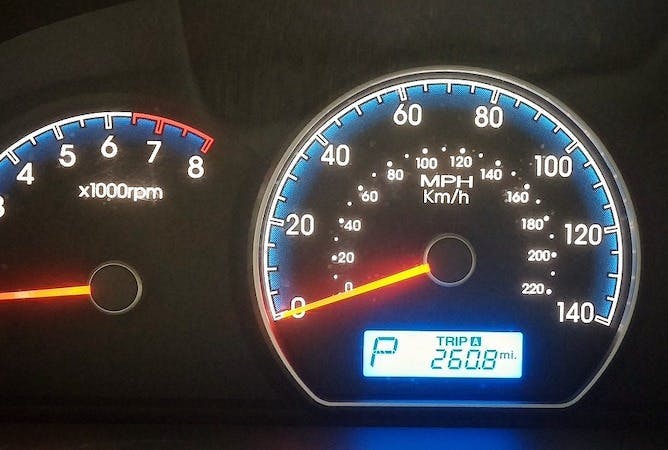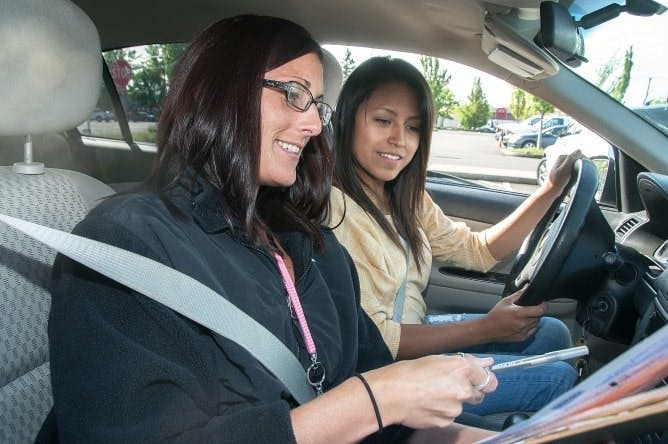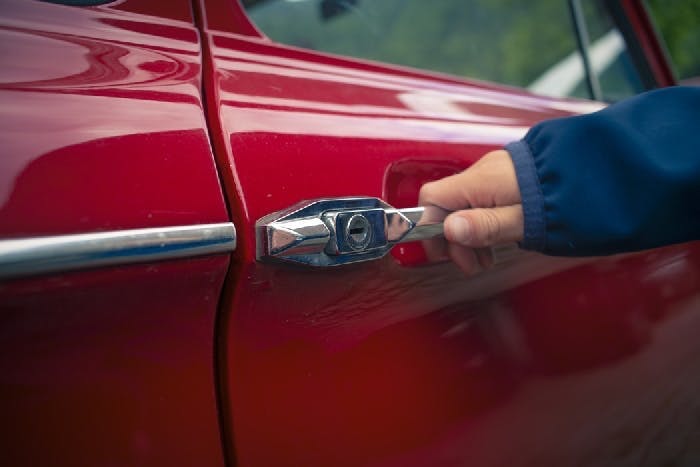
If you haven't sat behind the wheel since you first passed your test and have just forked out for a car, or you simply had to take a break for whatever reason, it can be incredibly nerve-wracking to get back out on the road. Even if it's only been a few months since you were last in a car, it's not always straightforward coming back to driving after a break. Though you might be legally qualified to drive, lack of practice can make it dangerous to just get back in the car and drive off wherever you please. You need to be sure that you're up to date with the latest rules of the road and feel not only comfortable, but also safe when driving.
If you're interested in coming back to driving after a break, there's plenty that you can do to rebuild your confidence and ensure you're safe on the roads. Keep on reading to find out more!
Taking a break from driving

If it's been a while since you've been behind the wheel, you're one of many qualified drivers to do so in the UK. Compare The Market conducted a survey of 3,002 licence holders in 2016 and found that 2% hadn't driven since passing their test, and 1 in 10 disclosed that they hadn't driven for 12 months. The odds are that, if you ask your friends or relatives, you'll find a few that are in the exact same boat.
So, why exactly do people take such a long break from driving? It varies from driver to driver, really. In the 2016 survey, the qualified drivers who had taken a long break cited the following reasons:
- 37% said the cost of driving was too high
- 25% lacked the confidence to get back on the road
- 20% said they hadn't considered the costs of driving before they took the test
- 9% felt pressured to pass the driving test at a young age
It makes a lot of sense. If you pass your test as soon as possible—at, say, 17 years old—you're not exactly going to be able to afford to buy a car, insurance cover and fuel. By the time you are able to cover the expense of driving, years will have passed and the prospect of getting back on the roads will have you breaking into a sweat. The same applies for those who take the test when they have no real need to drive. If you live in a city centre, for example, you're probably within walking distance of everything you'll need on a day-to-day basis.
So, what exactly can you do to get back into shape when coming back to driving after a break?
Go back to basics

Even though you're a qualified driver and legally allowed to head out onto the roads, it's not that simple if you haven't been behind the wheel for a long period of time. Whether it's only been a few months since you were last out on the roads or decades, the rules of the road are constantly changing, so you need to be sure your theoretical knowledge is up to snuff. Plus, a break—whether short or long—can have you feeling unsure in your driving ability, meaning you'll need to work at regaining your confidence.
Let's take a closer look at what this might entail on your end…
Work on your theoretical knowledge
Driving safely requires you to be familiar with the Highway Code, road signs and the many other rules of the road. Things are always changing on the road—from new smart motorways to learners now driving on motorways—so you need to try and get back up to date before you head back out onto the roads. There's a good reason why the DVSA requires learners to retake the theory test if they haven't passed the driving test within two years, and that's because theoretical knowledge is the key to safe driving.
Whilst you can't retake your theory test, there are plenty of other ways to put your knowledge to the test. We'd suggest taking a good look at our ultimate theory test revision resources guide. It contains a wealth of information and quizzes to help you refresh your knowledge and make sure you're familiar with aspects like motorway rules, road and traffic signs, hazard awareness and much more.
Put your skills to the test
If you've only been off the road for a few months and just feel a little rusty, you may simply wish to start driving in a less busy area to get into the swing of things again. Good examples could be an empty car park or a quiet residential estate. Before you head out, we'd suggest you take half an hour or so to get to grips with the car you're driving in. Then, head out to a familiar area and test your skills in areas like clutch control and manoeuvres.
For some drivers, it's as simple as that, and their muscle memory kicks in quickly when they come back to driving after a break. Others, however, end up feeling more unsure of themselves behind the wheel than they were when they first started learning to drive. If practising by yourself isn't doing anything for your nerves, or you feel like your driving skills are no longer as sharp as they used to be, you might want to look at practising with family and friends or professional tuition.
Outside help

Practice with family and friends
Sometimes, just having a family member or friend next to you in the passenger seat can boost your confidence a tenfold—whether they're keeping your nerves at bay by chatting to you or giving you handy tips. If you do intend to practise with someone, however, you'll need to make sure you have the correct insurance cover for the vehicle you intend to drive. It's also advisable to stick to areas you're familiar with at first and avoid driving at rush hour, at least until you feel more comfortable behind the wheel.
Of course, having a relative or friend beside you in the car can sometimes have the opposite effect. For example, you might not like their teaching style or you might end up feeling more pressure having them there. If this type of practice isn't having a positive effect on your nerves or lack of confidence, you might want to consider the next step.
Professional tuition
One of the best ways to get your confidence back to where it was when you first passed your driving test would be to take a refresher course with a DVSA-approved instructor. By doing so, you can refresh your driving knowledge and get essential guidance from someone who is experienced with teaching people how to drive. It's likely that your chosen instructor will have helped dozens of people in your exact situation before—with great results!
PassMeFast offers learners and qualified drivers three refresher course packages to choose from, depending on their confidence level: 10 hours and 15 hours. With one of our experienced instructors, you'll get a confidence boost and sharpen your skills so that you can drive unsupervised without a worry in the world. If you're interested, hit the button below to get started.
Pass Plus
If a refresher course isn't enough for you, you could also look into taking a Pass Plus course. This is an advanced driving course that people usually take soon after their driving test, but could also be beneficial for those looking to sharpen their driving skills and overcome their nerves. It can help you build up the skills you need to tackle any kind of road conditions. Moreover, it could give you the confidence boost you need to drive unsupervised.
You'll undertake a Pass Plus course with a DVSA-approved instructor who will monitor your progress, and, if you display competency across the modules in the course, they'll give you a Certificate of Completion. There are six modules in total:
- Town driving
- Rural driving
- All-weather driving
- Driving at night
- Driving on dual carriageways
- Driving on motorways
If you're interested, you can take a Pass Plus course with a PassMeFast instructor. To get started, simply click on the button below.
Tips for coming back to driving after a break

If you're still feeling a bit unsure in your own abilities, here are a few top tips to help you get back into driving shape!
1. Avoid unnecessary distractions
If you find it difficult to concentrate on driving and talking to your passengers at the same time, then it's pretty clear what you need to do—either avoid taking passengers with you on driving journeys or ask them not to talk to you while you're driving. This can also apply to music. If you spend half of your time trying to switch songs with one hand on the steering wheel, you're very clearly going to be a hazard to other road users. Radio silence, therefore, might be your best bet for a while.
Though we shouldn't really need to tell you, we will just in case: you are not allowed to use your mobile phone while driving. Not only is it a dangerous distraction, it's also illegal.
2. Pace yourself
If you don't feel ready for dual carriageways, roundabouts or motorways just yet, then stick to quieter roads for the time being. Don't force yourself to tackle road types and conditions that you're not comfortable with just yet—it's all about building up your confidence at a pace that suits you. Once you've got a few hours of practice under your belt, you can then begin to challenge yourself by driving to areas you're not familiar with using your sat nav.
3. Practice makes perfect
The more practice you get in, the more your muscle memory will start to kick in. Before you know it, you'll be taking to the roads like you've been driving for years. Try to drive every day or so, even if it's just for half an hour. We'd also advise you try practising a different times of the day, such as driving at night and at rush hour, as it will help you get used to different volumes of traffic. And if you ever feel overwhelmed, pull over in a safe place and take a few minutes to collect your thoughts.
4. Know your car inside and out
Whether you're practising in your own car or someone else's, you need to make sure you're completely familiar with it. For starters, you should read the car's user manual (an essential item to keep in any car!). Then, you should spend some time getting to grips with how everything works—from your hazard lights to windscreen wipers to fog lights. If you're not sure where things are when you're static, what do you think you'll be like on the roads?
5. Use your P plates
Even if you passed your driving test ten years ago, using P plates will let other drivers know that you might not be completely confident on the roads just yet. Not only will it make them aware of you, it will also push them to be a bit more careful near you—they'll be less likely to tailgate you, for example, if they know you might panic and react badly.
6. Remember, you'll get there eventually
Sometimes, it can take drivers a while to rebuild their confidence. Instead of worrying about how long it might take you to shed your nerves entirely, just concentrate on driving on a day to day basis. As long as you practise—whether with relatives, friends or a professional driving instructor—you will get there eventually. Rome wasn't built in a day after all!
Subscribe for driving advice, offers & more
We'd love to let you know about our courses, news and offers via email. You may unsubscribe at any time.
Star Genie Limited trading as PassMeFast. Company number 10093359
Copyright © 2024 owned by Star Genie Limited
PassMeFast, Blue Tower, MediaCityUK, Salford, M50 2ST

